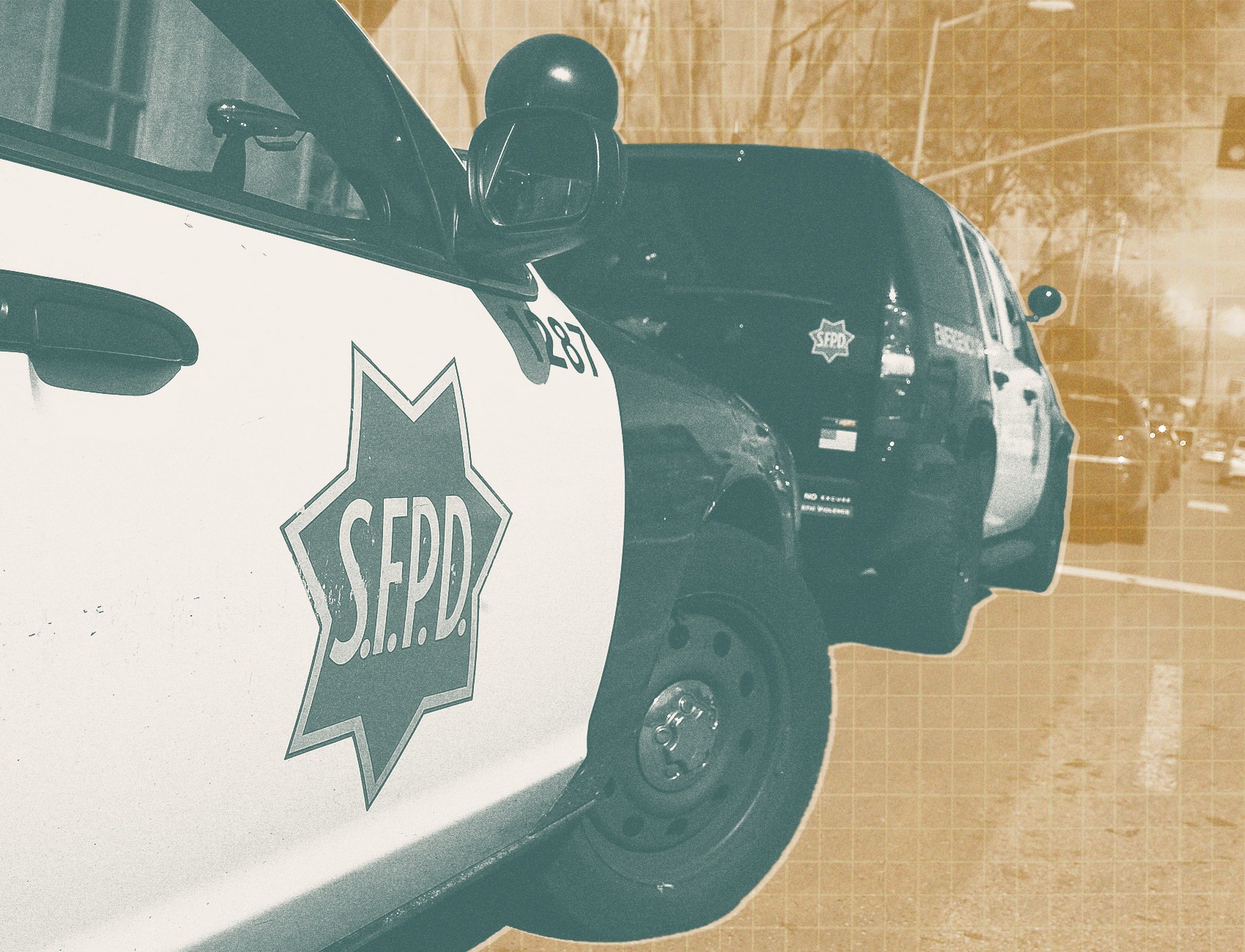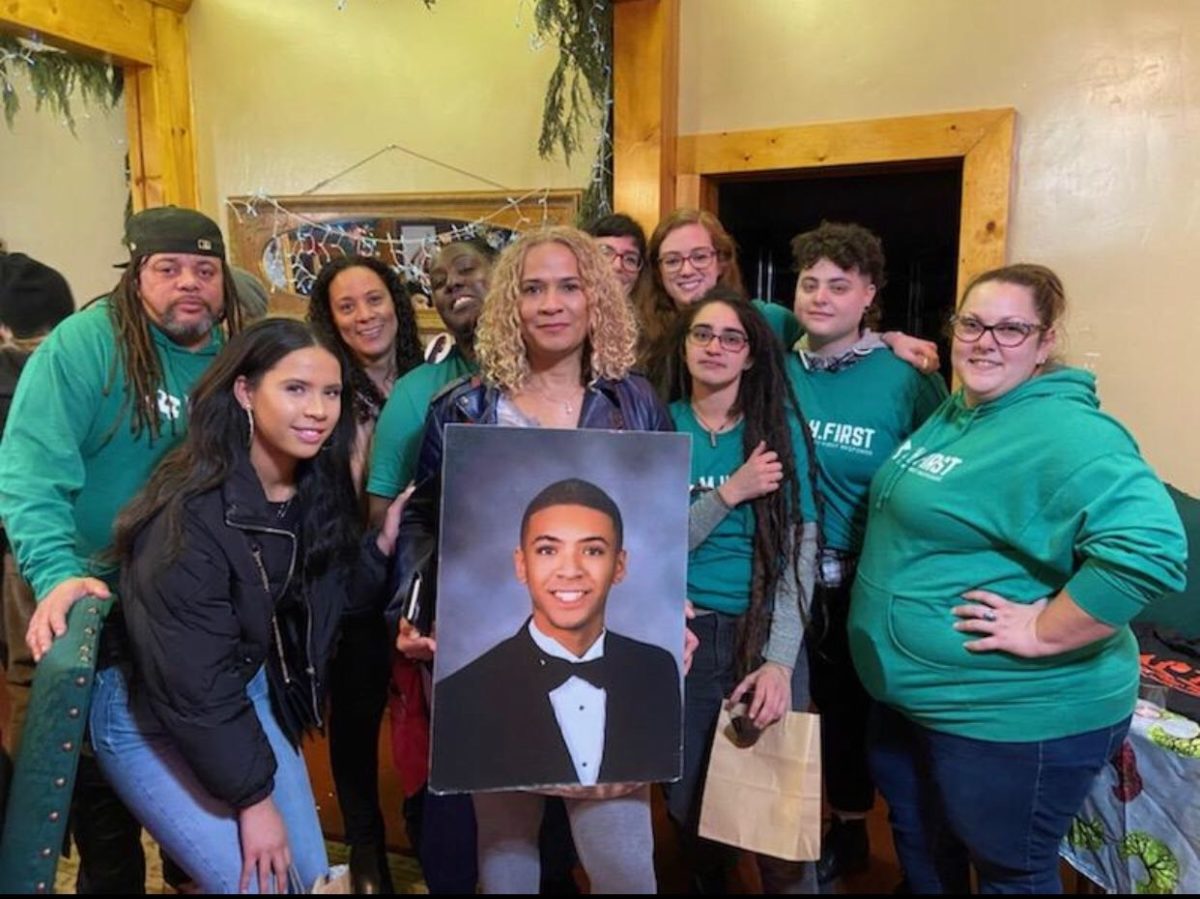New San Francisco D.A. Inherits Chance To Hold Police Accountable In Shooting Of Man With Mental Illness
Activists hope Chesa Boudin will press charges, and push for systemic changes to address the criminalization of mental illness.

On Jan. 6, 2017, at about 4:15 a.m., San Francisco Police Department officers Colin Patino and Kenneth Cha arrived at Sean Moore’s home. Moore’s neighbor, who had a temporary restraining order against him, had called police when he heard a knock on their shared wall.
Body camera footage shows that Moore answered his door and, in response to their questions, denied violating the restraining order. Throughout their interaction, Moore, a Black man who had been diagnosed with paranoid schizophrenia and bipolar disorder, told the officers to leave about 40 times. They refused and eventually Cha pepper sprayed him, the video shows. Moore went inside his home, telling the officers he couldn’t see; they ordered him to come out, which he did. Patino then beat him with his baton, and Cha shot him twice.
Moore waited in the ambulance for more than an hour at the scene before being taken to the hospital, according to a civil suit he filed in 2018 against the officers and the city and county of San Francisco. He was arrested and charged with multiple offenses, including assaulting Cha and Patino. In their statements, the officers claimed that Moore punched Patino in the face, but it’s unclear from the body camera footage whether that happened. Moore’s attorneys deny that Moore assaulted the officers; he put up his foot to fend them off as he was retreating after being pepper sprayed, according to Moore’s complaint.
“Mr. Moore displayed obvious signs of being mentally impaired as he was speaking in a loud, rapid tone and would then commence to mumbling, repeating himself and making nonsensical statements consistent with his diagnosed schizophrenia,” Moore’s attorneys wrote in their complaint. Rather than defuse the situation, the officers antagonized him, according to the suit.
While Moore was in the hospital, his bail was set at $2 million. Moore was released on May 4, 2017, after spending more than 100 days in custody. San Francisco Superior Court Judge Jeffrey Ross eventually dismissed all charges. The police department declined to answer The Appeal’s questions about Moore’s case. The city and officers deny all wrongdoing in their response to the court. They also deny that Moore waited in the ambulance for more than an hour.
More than three years after the shooting, both officers are still employed by the police department and neither has faced criminal charges. Now that former public defender Chesa Boudin, who campaigned as a reformer, has taken office as San Francisco district attorney, criminal justice reform advocates hope Cha and Patino will be held accountable.
Boudin has until early February to file criminal charges against them. The judge hearing Moore’s civil suit originally set a Jan. 10 deadline for the DA to decide whether to file charges. The DA’s office was granted a 30-day extension. In its December letter requesting the extension, the DA’s office said Boudin “intends to thoroughly evaluate the officer-involved shooting,” but would need more than two days to do so, as he was inaugurated on Jan. 8.
“Now that DA Boudin has taken office, he’s thoroughly reviewing all of the facts and circumstances before making a decision,” Boudin spokesperson Paula Lehman-Ewing told The Appeal. Boudin declined to provide additional comment.
“I believe that he intends to bring an independent, closer eye to look at all of these cases, including the Moore case,” said Cat Brooks, executive director of Justice Teams Network, an anti-police-violence advocacy group. “From our perspective on the outside, that should end up with charges.”
Boudin’s predecessor, George Gascón, was district attorney in San Francisco during a time of heightened tensions between police and communities of color in the city. Protests over a wave of fatal police shootings—police killed 15 people between 2012 and 2016, 10 of them people of color, according to the Fatal Encounters database—and a scandal over racist and homophobic text messages led to the 2016 resignation of Chief Greg Suhr.
Throughout Gascón’s tenure, from 2011 to 2019, local activists condemned his decisions not to charge police officers in any fatal shootings. Advocates were particularly outraged by his decision not to charge the officers who killed Mario Woods. In 2015, Woods, a Black man, was walking away and holding a knife at his side when police opened fire, hitting him with 20 bullets. Woods, like Moore, had mental health challenges, according to news reports. During the campaign, Boudin questioned Gascón’s decision not to press charges.
Gascón has defended his record, claiming that he was limited by state law, which permitted officers to kill even when nonlethal alternatives were available. Last August, Governor Gavin Newsom signed the California Act to Save Lives, which requires that officers use fatal force only when necessary. Gascón, who supported the bill, charged more officers with crimes than his predecessors, according to his spokesperson Maxwell Szabo. Last October, about a month before the election, Gascón resigned to move to Los Angeles. He is now challenging incumbent LA County District Attorney Jackie Lacey.
“No officer involved shooting incident specifically had facts that rose to the level of criminal conduct under the law,” Szabo told The Appeal in an email.
Advocates hope that, in addition to filing charges against Cha and Patino, Boudin will work to prevent police shootings by championing changes to the way communities respond to incidents involving people with mental illnesses.
“The short-term answer is to charge these officers and continue to charge officers that criminalize and assault our most vulnerable population,” said Brooks, who endorsed Boudin. “The bigger fix to the longer trajectory is for us to change the way we do business and stop sending badges and guns when we need compassion.”
Nationally, 1 in 4 people killed by police have an untreated serious mental health illness, according to the Treatment Advocacy Center’s 2015 report, “Overlooked in the Undercounted: The Role of Mental Illness in Fatal Law Enforcement Encounters.”
Moore’s shooting is “another one in a line of many cases in which somebody who had been diagnosed with a mental illness and has some emotionally disturbed behavior that’s flaring up or being presented, [is] encountering force from the police,” said University of California, San Francisco sociology professor Stacy Torres, who studies people living with mental illness in the city.
As of last September, almost half of San Francisco’s officers completed a 40-hour “crisis intervention team” training on working with people with mental illness, according to the police department. More than 2,000 law enforcement agencies nationwide have crisis intervention team programs, according to the University of Memphis CIT Center. Nationally, there are roughly 15,000 local law enforcement agencies in the United States, according to the U.S. Department of Justice.
Although these programs are a necessary step in the right direction, Torres says, they haven’t stopped fatal shootings. In the case of Mario Woods, for instance, three of the officers at the scene had received crisis intervention training, according to the San Francisco Chronicle. And last June, two Walnut Creek, California, police officers shot and killed Miles Hall, who had been diagnosed with schizoaffective disorder. The police department reported that four of the five officers at the scene had received crisis intervention training within the last year.

On June 2, Hall’s mother called 911 as his mental health deteriorated. Five officers responded. Hall was carrying what the police describe as an almost five-foot long pry bar, and what the family’s complaint calls a metal gardening rod. As Hall ran past the officers, holding the object, Officers KC Hsiao and Melissa Murphy shot him, according to footage that the police department released. While on the ground, he was handcuffed, according to the video.
In the months prior to Hall’s death, his family had been working with mental health resource Officer Tammy Keagy, who arrived at the scene shortly before police shot Hall, according to the family’s civil complaint. His family alleges that they had planned, with Keagy, to call 911 if an incident arose so Hall, who did not recognize that he was mentally ill, could be involuntarily hospitalized and treated.
Because of these types of incidents, advocates have called for programs—unattached to law enforcement—that can respond to people who need mental health help.
“Why did it ever make sense for police to respond?” Asantewaa Boykin, a registered nurse and organizer with the Anti Police-Terror Project’s Sacramento chapter, told The Appeal. “We live in a culture that tries to incarcerate its way out of public health crises. The first answer, according to our culture, was call the police. Call the people with guns.”
On Jan. 3, Boykin’s group launched the MH First hotline. Community members can call or text 916-670-4062, and mental health and medical professionals will be dispatched to intervene. The hotline is open Friday, Saturday, and Sunday from 7 p.m. to 7 a.m.
The program’s clients are those who need help, but may not be able to express that in a “language that is translatable for us,” explained Boykin. Doctors are also available to walk clients into emergency departments to help them obtain care, said Boykin.
“Someone screaming at a light post in the middle of the night might translate into, ‘Hey, I’m really, really high and maybe just need a place to feel safe, or I don’t have a place to find shelter. Can you help me with that?’” said Boykin.
Brooks would like to see a similar approach in San Francisco. “I’m hoping that just beyond this charging decision, that those are the kinds of policies that Chesa starts to look into and advocate for,” said Brooks. “And that San Francisco becomes the model for the country of how we start to stem the tide of police violence.”
After Officer Cha shot Moore, it appeared that Moore continued to struggle with mental health issues, according to court documents. After his case was dismissed, in 2017, he allegedly made more than a hundred phone calls to a San Francisco police station, according to court documents. Later that year he allegedly called a jogger a slur, and then hit the jogger’s brother. The phone calls, which occurred before the assault, indicated, “that Moore is in crisis and suffering from a mental disease or defect,” his public defender, Herman Holland, wrote to the court. However, Holland continued, the police made no attempt to obtain help for Moore or work with another agency to conduct a welfare check.
Moore was convicted of battery with a hate crime enhancement, criminal threats, and harassing phone calls, according to San Francisco DA spokesperson Alex Bastian. Last year, while on probation, he was accused of making more threatening calls to a police station. On Nov. 20, Moore was sent from San Francisco county to San Quentin prison, according to the California Department of Corrections and Rehabilitation. He would have been eligible for parole this year.
On Monday, Moore, 46, was found unresponsive in a prison dormitory, according to the department, and he was pronounced dead at 3:44 p.m. “His cause of death is pending the results of an autopsy,” a department spokesperson wrote in an email to The Appeal.
“The district attorney’s office once again criminalized Mr. Moore’s mental disability,” Adanté Pointer, one of Moore’s civil attorneys, told The Appeal of his most recent convictions. “The entire system in my opinion, save the public defender’s office, has failed him.”
Darwin BondGraham contributed to this report.
